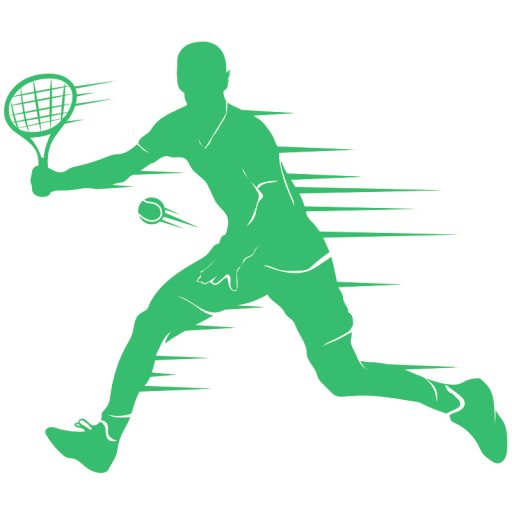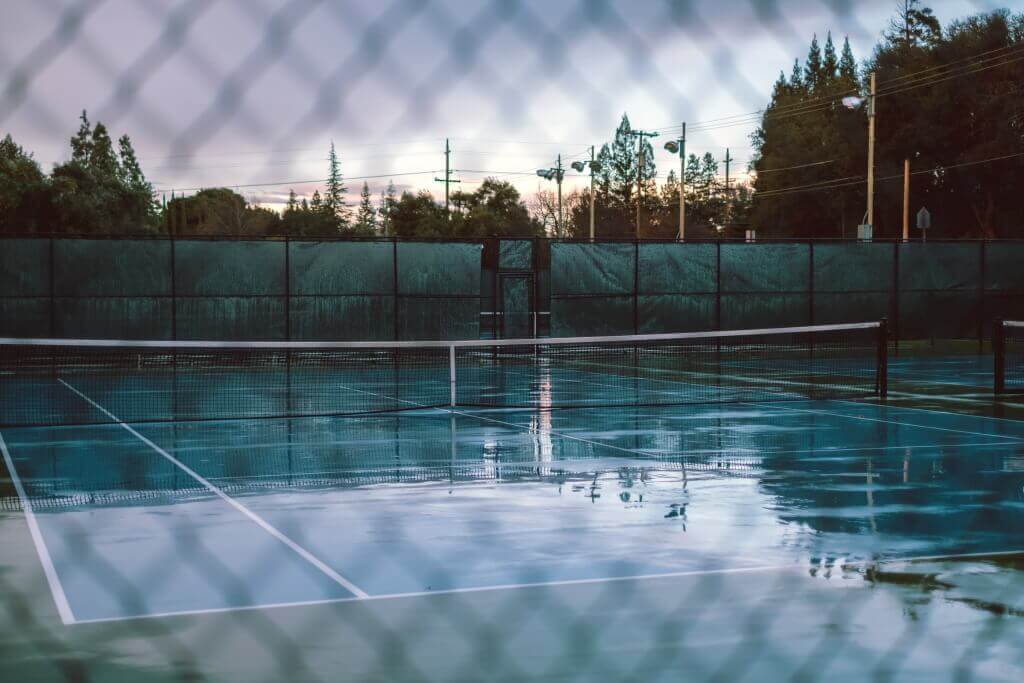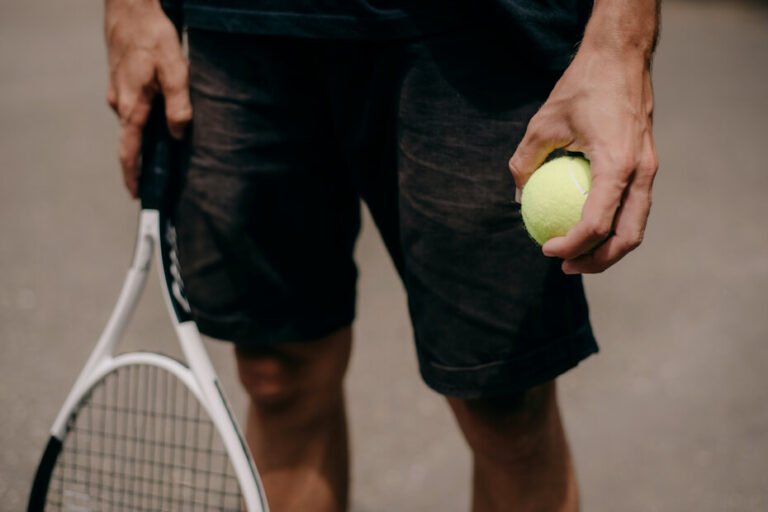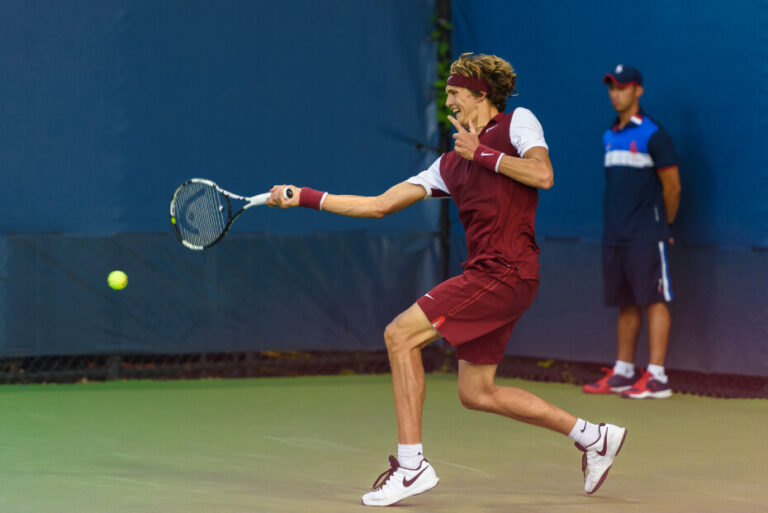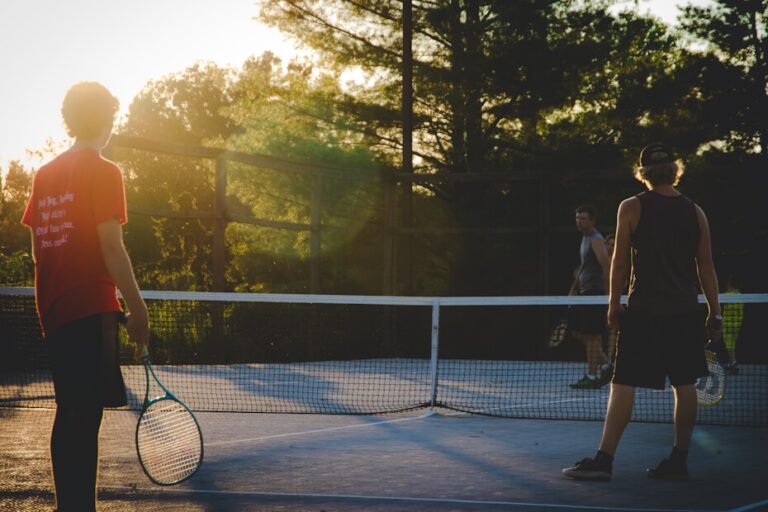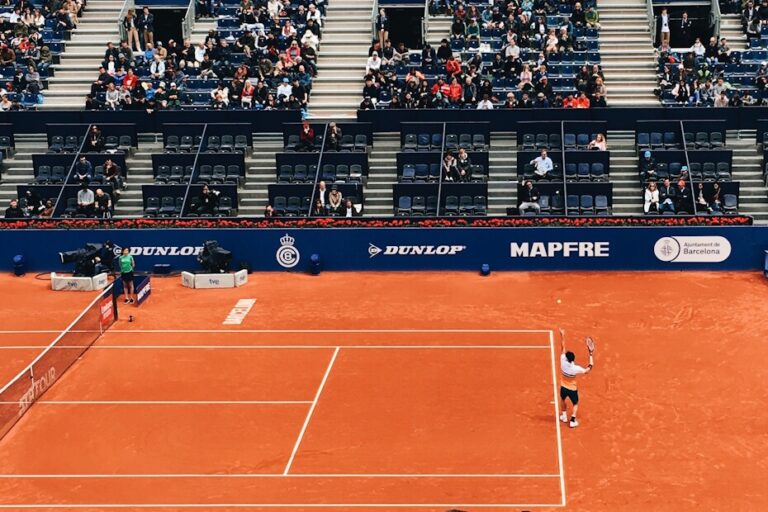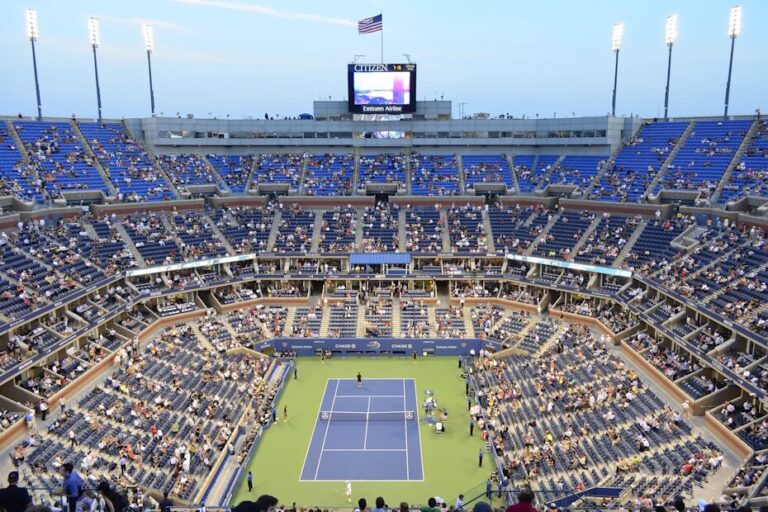If there’s one thing that viewers of tennis absolutely dread, it’s times when there is rain in the forecast when an important tennis match is due to be played.
Tennis fans will no doubt be aware that rain generally spells a long delay to play, or it can even result in games being postponed or abandoned entirely. For example, fans of Wimbledon in the UK are used to rain halting play as it tends to rain a lot in the UK, even during the summer when the Wimbledon tournament is held.
The invention of stadiums with retractable roofs has undoubtedly helped with this issue. Still, due to the logistics and the costs, it’s unfortunately not feasible for every tennis stadium to have a retractable roof, at least not yet.
Rain for a professional tennis player is bad news, but what about the more casual player like those of you reading this article today? Are you likely to let a little, or a lot of, rain ruin your fun, or are you likely to battle through the elements? More importantly, can you play tennis in the rain, and if so, how? Here’s a look at what you need to know about playing tennis in the rain.
Can You Play Tennis in the Rain?
The simple answer to this question is – yes, you can. It will depend on the severity of the rain, and indeed, the type of tennis court and surface that you’re playing on, but yes, you can play tennis in the rain.
Official games of tennis are, of course, an entirely different kettle of fish because there is so much at stake, and because rain can affect play, it can affect the surface you’re playing on, plus it can be dangerous.
One infamous incident involving a rain-stopping play actually happened not too long back in 2021, at the 2021 US Open in New York. Here, remnants of Hurricane Ida pummelled New York, bringing torrential rain and flash flooding. Unbelievably, despite the matches being played on two courts with retractable roofs at the Billie Jean King National Tennis Center, the rain was so severe that it made its way inside anyway, soaking the court, players, and spectators in the audience.
Needless to say, we certainly wouldn’t advise that you play tennis in a hurricane, or torrential rain for that matter, but if you can tolerate a bit of precipitation, you can certainly enjoy a game of tennis in the rain with very few issues at all.
Things to Know When Playing Tennis in the Rain
As previously mentioned, you can certainly play tennis in the rain if you wish, though that certainly doesn’t mean that your tennis playing experience will be the same as if you were playing in warm and dry conditions.
Playing tennis in the rain is not very pleasant, but then again, doing most things in the rain isn’t exactly a magical experience, especially if you find yourself cold and soggy. The rain can cause the balls to become heavy and water-logged, plus the tennis court itself will likely be slippery, depending on which surface you play on.
Playing in the rain might not be as enjoyable as playing in warm sunshine, but sometimes you and your buddies just need to get out there and onto the courts, regardless of the weather. Just be aware that playing tennis in the rain will require more caution when moving around, the ball will be heavier, and there will be an increased risk of injury.
If you happen to play tennis in an indoor tennis court, however, or a court with a retractable roof, then barring a natural disaster such as the remnants of a hurricane, come rain or shine, your tennis playing experience will not be affected at all.
How Long Do Tennis Courts Take to Dry?
If you’re really in the mood for a game of tennis and you’ve risked visiting the courts, despite rain being in the forecast and you’ve been unfortunate enough to be on the receiving end of when the weather forecast was actually correct, you might want to know how long a tennis court takes to dry.
You could play on a wet surface of course, but this does pose significant safety risks, plus it can slow down the play, and take some of the fun out of the game. If given the choice, you’d likely much rather just sit and wait for the court to dry, but how long will this take?
Clay Courts
When talking about the duration of time required for a tennis court to dry after a rain shower, it depends on the type of court surface in the first place. Clay courts, for example, take an average of 15 – 30 minutes to dry after a fairly light shower.
In the event of heavy rain, not to mention a lack of sunlight, drying times for clay courts can take over an hour.
Hard Surface Courts
If you play on a hard-surfaced tennis court, however, drying times are considerably longer because there is no natural drainage. Hard surfaced courts can take over an hour to dry after a light shower, and so after a heavy downpour it can take 2 – 4 hours, plus puddling is also likely.
Put simply, if it rains while you’re playing on a hard surface, don’t expect to sit it out and take a short break and find that the courts have magically dried because that just isn’t going to happen.
Grass Courts
If you play on a grass court, unfortunately, you may as well resign yourself to the fact that it isn’t going to dry anytime soon, even with drainage in place. The grass is the most absorbent of all tennis surfaces. It can take several hours for a grass court to fully dry completely, even if it has only rained fairly lightly.
Tips for Playing in the Rain
If you do have your heart set on a game of tennis in the rain, or if you have no option but to play in the rain, the good news is that you can play in wet conditions, you just need to adapt your game somewhat.
Here’s a look at a few useful tips for playing tennis in the rain.
1. Avoid kick Serves
In dry conditions, kick serves can be extremely effective ways of serving, especially considering balls bounce much higher when the surface is completely dry.
When wet, however, balls don’t bounce as high and as a result, your serve loses a lot of steam and momentum, meaning that it will often be lining up perfectly with the strike zone of your opponent.
Remember, with a kick serve it’s all about the bounce, and so if the bounce isn’t there because of wet conditions, your serves simply won’t have that same ‘oomph’ that they’d normally have.
2. Slow down and wear suitable footwear
When playing in the rain, one of the biggest risks is that of injury caused by slipping, and we want you to avoid that.
The last thing we want is for you to slip in the rain and hurt yourself, so if the surface is wet and slippery, be sure to slow things down, be careful, and be sure to wear suitable footwear with a lot of grip and traction.
Just be aware when playing on clay in wet conditions, that your shoes may lose traction because the clay may find itself turning to mud and getting wedged in the tread of your shoes. This will not only cause them to lose traction, but they’ll also likely feel heavy.
3. Work on your volley game
If you’re playing tennis in the rain, another handy tip is to work on your volley game.
Instead of staying in a long rally with groundstrokes, why not volley the ball more and try something new and different.
Unless this is your usual style of play, your opponent will likely be confused if you switch up your tactics and try something different. More importantly, though, with this style of play, there is far less running involved which means there’s less chance of slipping and injuring yourself.
